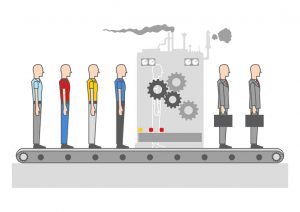
In the daily on-goings of any organization, one usually lives too close to the day-to-day operations to deal with great processes of change. When these are explicitly stated, they are usually translated into methodological aspects of change management, such as communication plans, risk mitigation or stakeholder analysis.
Change management is an area of highly formalized management. When there are high degrees of formalization, it is easy to get lost in standardized procedures and lose sight of the purpose of change.
Learn how to cope with change from real success experiences
In addition, it is a comfortable approach, which we are accustomed to and that supposedly achieves good results.
However, it is less frequent to carry out a more in-depth analysis that looks at the situation in perspective and asks questions such as what is the company doing, what is it giving to customers or what do they expect from our work, from the dissonances that are identified, to reorient the work of the organization.
In short, we usually define our daily activity and that of our company based on what we do, but we do not consider what the company's own existence has in its business niche, in the market, and in the world as a whole, and what we hope to contribute to society.
What would happen if, instead of understanding change as a matter of processes, we start with results?
What if, from now on instead of focusing on how the company works, we focus on why and what we do our work for?
Perhaps in this instance the change management would cease to be paralyzed by personal processes of resistance to find its energy precisely in individual change.
After all, a company is the sum of all its workers. To produce change in global management, it is easier to begin with the discipline of each employee's work, to review their motivations and their reference criteria and productivity.
Once individual change is achieved, the next step is to achieve global change, which will have greater results than those achieved as the sum of the individual change due to the emergence of new synergy benefits.
In this way, the change begins by focusing on the reorientation of each individual. Subsequently, we move on to a second phase in which the mechanisms that articulate individual changes are optimized to maximize the benefits of group work.
On the other hand, the adoption by the group of certain attitudes and work systems implies the need to adapt all parts of it, both those already in the company and those that may come in the future.
The cycle gives positive feedback, managing to maintain the effects of the change both as meaning or purpose of the work and in terms of application of concrete methodologies.
Summarized in a sentence, change management seeks to mobilize all workers individually to achieve the success of each of them, and from that, achieve global results, which in turn translate into individual changes.
Does this mean that traditional systems of customer analysis, impact, communication planning, risk management and other factors are useless?
On the contrary: all these aspects are fundamental to implement individual and company objectives, to optimize methodologies and application systems.
All improvements aimed at optimizing work processes explain how to achieve the objectives, but they will only make sense if they are framed in a context of the global and the individual aspects that can harmonize the work of the parties from the recognition of the differences in the roles of each team member.

